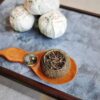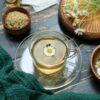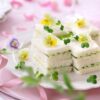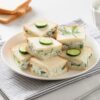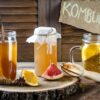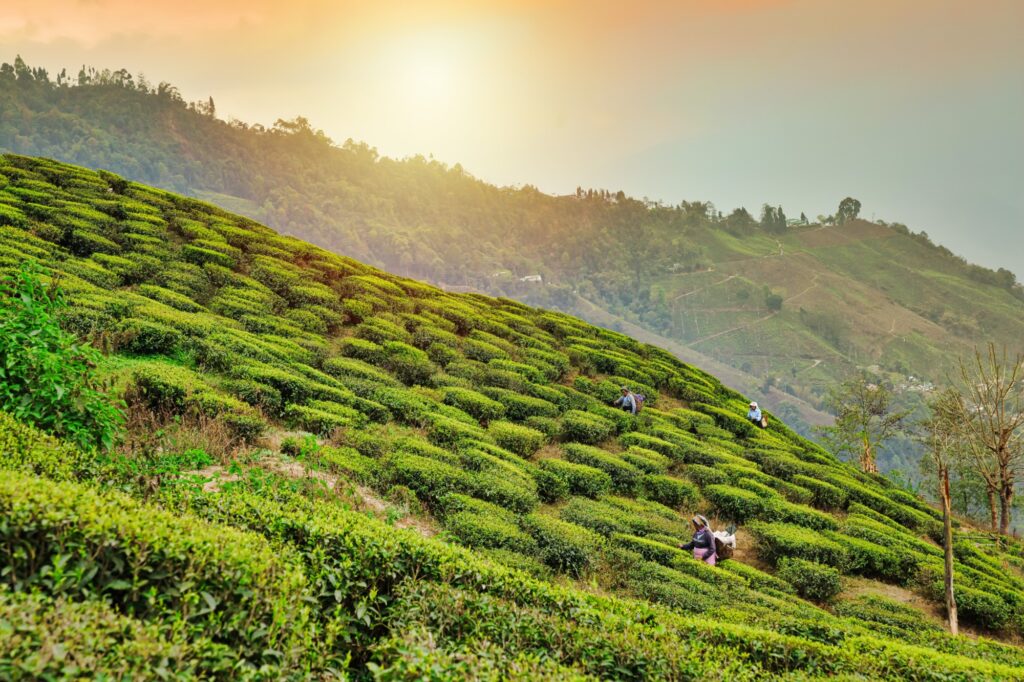
Nestled in the majestic Himalayas, the enchanting region of Darjeeling is renowned for its exquisite tea, a beverage that captivates the senses with its unparalleled aroma and flavor. Himalayan Darjeeling tea, a true gem among the world’s finest teas, is a delightful fusion of nature’s bounty and the skilled artistry of tea cultivators.
Regarded as the “Champagne of Teas,” Himalayan Darjeeling tea is a true embodiment of elegance and refinement. Its distinctive character is a result of the region’s unique terroir, which encompasses the fertile soil, cool temperatures, and misty mountain air that nurture the tea plants. Each sip of this extraordinary beverage promises to transport you on a sensory journey, unveiling a tapestry of flavors and aromas that will captivate even the most discerning tea connoisseurs.
The unique characteristics of Himalayan Darjeeling tea
Himalayan Darjeeling tea is celebrated for its unparalleled character, which sets it apart from other teas. This section explores the unique characteristics that make this tea truly exceptional.
Aroma and Flavor
The aroma and flavor of Himalayan Darjeeling tea are its crowning glories. Upon steeping, the tea releases a captivating bouquet of floral and fruity notes, often described as a delightful blend of muscatel, citrus, and even hints of peach or apricot. The flavor is equally enticing, offering a delicate balance of astringency and sweetness, with a lingering finish that leaves a pleasantly refreshing aftertaste.
Color and Appearance
Himalayan Darjeeling tea boasts a vibrant and alluring appearance. The liquor ranges from a delicate golden hue to a rich, amber-like color, depending on the specific flush and oxidation level. The tea leaves themselves are meticulously rolled and twisted, revealing their intricate beauty and showcasing the skill of the tea artisans.
Terroir
The terroir, or the unique combination of environmental factors, plays a crucial role in shaping the character of Himalayan Darjeeling tea. The tea gardens are nestled in the foothills of the Himalayas, where the cool mountain air, high altitude, and well-drained soil create an ideal microclimate for cultivating the finest tea leaves. This terroir imparts a distinct and unmatched flavor profile to the tea, making it truly one-of-a-kind.
The history and origin of Himalayan Darjeeling tea
The history of Himalayan Darjeeling tea is a captivating tale that spans centuries, intertwining with the rich cultural heritage of the region. This section delves into the origins and evolution of this exceptional tea.
Early Beginnings
The cultivation of tea in the Darjeeling region can be traced back to the mid-19th century when the British East India Company established the first tea plantations in the area. The region’s favorable climate and fertile soil quickly gained recognition, and tea cultivation flourished, becoming an integral part of the local economy and culture.
The Influence of British Colonialism
During the British colonial era, Darjeeling tea gained immense popularity and became a symbol of luxury and refinement. The British planters introduced advanced cultivation techniques and established strict quality standards, ensuring that Darjeeling tea maintained its exceptional reputation worldwide.
Geographical Indications and Protection
To safeguard the authenticity and quality of Himalayan Darjeeling tea, the Indian government implemented strict geographical indications and protection measures. Only tea grown within the designated Darjeeling region can be labeled as “Darjeeling Tea,” ensuring that consumers receive the genuine article and preserving the tea’s legacy.
The different types of Himalayan Darjeeling tea
Himalayan Darjeeling tea is available in various forms, each offering a unique flavor profile and character. This section explores the different types of this exceptional tea.
- Flush Types:
- First Flush: Harvested in early spring, First Flush Darjeeling tea is known for its delicate, light, and refreshing flavor with floral and vegetal notes.
- Second Flush: Plucked during the summer months, Second Flush Darjeeling tea boasts a more robust and full-bodied character with muscatel and fruity undertones.
- Autumnal Flush: Harvested in the fall, Autumnal Flush Darjeeling tea offers a rich, mellow flavor with hints of nuttiness and a smooth finish.
- Processing Methods:
- Black Tea: The most common and traditional form, Darjeeling black tea undergoes a full oxidation process, resulting in a deep, robust flavor.
- Green Tea: Minimally oxidized, Darjeeling green tea retains its fresh, grassy notes and a vibrant, pale green liquor.
- Oolong Tea: Partially oxidized, Darjeeling oolong tea offers a unique balance between the characteristics of black and green teas.
- White Tea: Delicate and minimally processed, Darjeeling white tea showcases the tea’s natural sweetness and subtle floral aromas.
- Specialty Grades:
- Darjeeling First Flush: The first harvest of the season, highly prized for its exceptional quality and delicate flavor.
- Darjeeling Muscatel: A premium grade known for its distinctive muscatel aroma and flavor, often compared to the taste of grapes or raisins.
- Darjeeling Clonal: Produced from specific tea cultivars, offering unique and consistent flavor profiles.
The production process of Himalayan Darjeeling tea
The production of Himalayan Darjeeling tea is a labor-intensive process that requires skilled artisans and meticulous attention to detail. This section explores the intricate steps involved in transforming the freshly plucked tea leaves into the exquisite beverage we know and love.
- Plucking
- The tea leaves are carefully handpicked by skilled workers, ensuring that only the finest, most tender leaves and buds are selected.
- The plucking process is carried out during the optimal weather conditions, typically in the early morning hours when the leaves are at their freshest.
- Withering
- After plucking, the tea leaves undergo a withering process, where they are spread out in well-ventilated rooms to allow for moisture loss and physical softening.
- This step is crucial for initiating the biochemical changes that will later develop the tea’s unique aroma and flavor.
- Rolling and Oxidation
- The withered leaves are then rolled, either by hand or using specialized machines, to initiate the oxidation process.
- During oxidation, the enzymes in the tea leaves interact with oxygen, causing chemical reactions that develop the tea’s distinct color, aroma, and flavor.
- The level of oxidation determines whether the tea will be classified as black, oolong, or green.
- Drying and Firing
- After achieving the desired level of oxidation, the tea leaves undergo a drying or firing process to halt the oxidation and remove any remaining moisture.
- This step is crucial for preserving the tea’s quality and ensuring its longevity.
- Sorting and Grading
- The dried tea leaves are meticulously sorted and graded based on their size, shape, and quality.
- This process ensures that only the finest leaves are selected for packaging and distribution.
- Packaging and Storage
- The graded tea leaves are carefully packaged, often in airtight containers or vacuum-sealed pouches, to preserve their freshness and aroma.
- Proper storage conditions, including controlled temperature and humidity, are essential for maintaining the tea’s quality over time.
Throughout the production process, the tea artisans employ traditional techniques passed down through generations, combined with modern quality control measures, to ensure that each batch of Himalayan Darjeeling tea meets the highest standards of excellence.
The health benefits of Himalayan Darjeeling tea
Beyond its exquisite taste and aroma, Himalayan Darjeeling tea offers a wealth of health benefits, making it a delightful addition to any wellness-conscious lifestyle. This section explores the potential advantages of incorporating this exceptional tea into your daily routine.
- Antioxidant Properties
- Darjeeling tea is rich in polyphenolic compounds, particularly flavonoids and tannins, which act as powerful antioxidants.
- These antioxidants help neutralize harmful free radicals in the body, reducing oxidative stress and potentially lowering the risk of various chronic diseases.
- Cardiovascular Health
- Studies have suggested that the regular consumption of Darjeeling tea may contribute to improved cardiovascular health.
- The antioxidants present in the tea may help lower cholesterol levels, reduce inflammation, and promote healthy blood vessel function, potentially decreasing the risk of heart disease.
- Digestive Support
- Darjeeling tea contains compounds that can aid in digestion and promote a healthy gut environment.
- The tea’s mild astringency may help soothe digestive issues and alleviate symptoms such as bloating and indigestion.
- Cognitive Function
- The presence of L-theanine, an amino acid found in Darjeeling tea, has been linked to improved cognitive function and mental alertness.
- This compound may promote relaxation while enhancing focus and concentration, making Darjeeling tea a potential ally for productivity and mental clarity.
- Potential Weight Management
- Darjeeling tea may contribute to weight management efforts by boosting metabolism and promoting a feeling of fullness.
- The tea’s natural compounds, such as caffeine and polyphenols, may aid in increasing energy expenditure and reducing calorie intake.
It’s important to note that while these potential health benefits are promising, moderation is key, and Darjeeling tea should be enjoyed as part of a balanced and healthy lifestyle.
How to properly brew and enjoy Himalayan Darjeeling tea
To fully appreciate the exquisite aroma and flavor of Himalayan Darjeeling tea, it’s essential to follow proper brewing techniques. This section provides guidance on how to prepare and savor this exceptional beverage.
- Water Quality
- Start with fresh, high-quality water, as the water’s mineral content can significantly impact the tea’s flavor.
- Filtered or spring water is generally recommended for optimal taste.
- Temperature
- Darjeeling tea requires precise water temperatures to extract its delicate flavors.
- For black Darjeeling teas, the recommended water temperature is between 195°F and 205°F (90°C and 96°C).
- For green and white Darjeeling teas, the ideal water temperature is around 170°F to 180°F (77°C to 82°C).
- Steeping Time
- The steeping time for Darjeeling tea varies depending on the type and desired strength.
- As a general guideline, black Darjeeling teas should steep for 3 to 5 minutes, while green and white teas require a shorter steeping time of 2 to 3 minutes.
- Tea Leaves and Quantity
- Use high-quality, loose-leaf Darjeeling tea for the best flavor and aroma.
- The recommended amount is approximately 1 teaspoon of tea leaves per 6 to 8 ounces of water, but this can be adjusted based on personal preference.
- Brewing Method
- Darjeeling tea can be brewed using various methods, such as a teapot, gaiwan, or infuser.
- For optimal flavor, it’s recommended to warm the brewing vessel before adding the tea leaves and hot water.
- Enjoying the Experience
- Savor the aroma of the freshly brewed Darjeeling tea by taking a moment to appreciate its bouquet before sipping.
- Darjeeling tea can be enjoyed plain or with a touch of milk, sugar, or lemon, depending on personal preference.
- Consider pairing the tea with complementary snacks or desserts to enhance the overall experience.
Remember, brewing Himalayan Darjeeling tea is an art form, and experimenting with different techniques can lead to discovering your perfect cup.
Where to buy authentic Himalayan Darjeeling tea
Obtaining authentic and high-quality Himalayan Darjeeling tea can be a challenge, as this exceptional beverage is produced in a limited geographic region. This section provides guidance on where to source genuine Darjeeling tea and ensure you’re savoring the real deal.
- Direct from Tea Estates
- One of the best ways to obtain authentic Darjeeling tea is to purchase directly from reputable tea estates or gardens located in the Darjeeling region.
- Many tea estates offer online shops or direct sales channels, allowing you to acquire the tea straight from the source.
- Specialty Tea Retailers
- Seek out specialty tea retailers or online stores that specialize in sourcing and selling high-quality, single-origin teas from around the world, including Darjeeling.
- These retailers often have strong relationships with tea estates and can provide detailed information about the tea’s provenance and quality.
- Trusted Online Marketplaces
- Reputable online marketplaces, such as those dedicated to specialty foods and beverages, may offer a curated selection of authentic Darjeeling teas from verified sellers.
- Be sure to read reviews and research the seller’s reputation to ensure you’re purchasing from a reliable source.
- Local Tea Shops and Importers
- In areas with a significant tea-drinking culture or a large Indian diaspora, you may find local tea shops or importers that specialize in sourcing and selling genuine Darjeeling teas.
- These establishments often have knowledgeable staff who can guide you in selecting the perfect Darjeeling tea for your preferences.
- Certifications and Labels
- Look for certifications or labels that indicate the tea’s authenticity and origin, such as the Darjeeling Tea Association’s certification or the Indian government’s geographical indication (GI) label.
- These certifications provide assurance that the tea you’re purchasing is indeed from the Darjeeling region and meets specific quality standards.
When purchasing Himalayan Darjeeling tea, it’s essential to be mindful of potential counterfeit products or misleading claims. Reputable sellers will be transparent about the tea’s origin, flush, and processing methods, allowing you to make an informed decision and truly savor the authentic flavors of this exceptional tea.
The cultural significance of Himalayan Darjeeling tea
Himalayan Darjeeling tea is more than just a beverage; it is a cultural icon that holds deep significance in the regions where it is cultivated and consumed. This section explores the intricate cultural ties and traditions associated with this exceptional tea.
- Tea and Hospitality
- In the Darjeeling region and throughout India, the ritual of serving tea is deeply ingrained in the cultural fabric and is considered a symbol of hospitality and warmth.
- Offering a cup of freshly brewed Darjeeling tea to guests is a cherished tradition that fosters connections and creates a welcoming atmosphere.
- Tea Gardens and Community
- The tea gardens of Darjeeling are not just places of cultivation but also vibrant communities with their own rich histories and customs.
- Many tea workers and their families have lived on the estates for generations, passing down traditional knowledge and techniques from one generation to the next.
- Tea Ceremonies and Rituals
- In certain regions of India, tea ceremonies and rituals have evolved around the preparation and consumption of Darjeeling tea.
- These ceremonies often involve intricate steps and specialized utensils, elevating the tea-drinking experience to an art form.
- Artistic Inspiration
- The beauty and elegance of Himalayan Darjeeling tea have inspired numerous artistic expressions, from poetry and literature to paintings and photography.
- The tea’s captivating aroma, flavor, and visual appeal have captured the imagination of artists across various mediums.
- Global Appreciation
- Dar jeeling tea has gained global recognition and appreciation, transcending cultural boundaries and becoming a beloved beverage among tea enthusiasts worldwide. Its unique character and unparalleled quality have made it a sought-after commodity, celebrated in tea houses, cafes, and homes across the globe.
As you immerse yourself in the world of Himalayan Darjeeling tea, you’ll discover a rich tapestry of traditions, stories, and cultural significance that elevate this exceptional beverage beyond mere refreshment. Each sip becomes a gateway to understanding and appreciating the intricate connections between tea, land, and people, fostering a deeper appreciation for the artistry and heritage that goes into every cup.
Embracing the exquisite aroma and flavor of Himalayan Darjeeling tea
Himalayan Darjeeling tea is a true masterpiece, a harmonious blend of nature’s bounty and human artistry. From the misty slopes of the Himalayas to the delicate cups in which it is savored, this exceptional tea embodies a journey of passion, skill, and cultural heritage.
As you savor each sip, allow the captivating aromas and flavors to transport you to the tea gardens of Darjeeling, where the gentle caress of the mountain breeze whispers tales of the tea’s rich history and the dedication of the tea cultivators. Embrace the exquisite experience of Himalayan Darjeeling tea, and let it become a cherished ritual in your daily life, a moment of indulgence and mindfulness amidst the hustle and bustle of modern times.
Whether you’re a seasoned tea connoisseur or a curious newcomer, the allure of Darjeeling tea lies in its ability to captivate the senses and ignite a newfound appreciation for the art of tea cultivation and preparation. Immerse yourself in this extraordinary beverage, and let its enchanting flavors and aromas become a source of joy, relaxation, and cultural exploration.
So, raise your cup and toast to the enduring legacy of Himalayan Darjeeling tea, a true gem that has withstood the test of time and continues to delight and inspire tea lovers around the world. Embrace the exquisite aroma and flavor, and let each sip transport you on a journey of discovery, savoring the rich tapestry of flavors that have made this tea a global icon.

